Comparing Third-Wave Behavior Therapies for Treating Depression

Abstract
The objective of this article is to decipher which third-wave behavioral therapy is best at treating depression. The focus is on the third-wave therapies of ACT, FAP, MBCT, and BA because they have been shown to be used for the treatment of depression. Depression is the most common psychological disease that clinicians must treat; thus, a great emphasis needs to be placed on what therapies may be best at treating it. Consequently, this article tries to do so by performing a cost/benefit analysis of the third-wave behavioral therapies. This analysis centers on the effectiveness, harm, affordability, and client satisfactions of the treatments because these four criteria reveal the worth of psychotherapies. After the cost/benefit analysis was undertaken, the best therapy for treating depression was found to be MBCT. However, this conclusion is unmerited because of the lack of research available on the harm and affordability of therapies. Therefore, future research should seek to further discover the harm and affordability of these therapies.
Why the Focus is on Third-Wave Behavior Therapies
With so many therapies springing up to solve the most profuse problem psychologists in the United States face with their clients, depression, (Lewis 2012) it is necessary to have a cost/benefit analysis of these therapies in order to discover the most beneficial of the bunch. Because the third-wave behavior therapies stem from and are often used in conjunction with cognitive behavioral therapy, which is the psychotherapy with the most empirical research, a cost/benefit analysis of these therapies can more easily and reliably be constructed (Ost 2008). Therefore, the third-wave behavior therapies which have had empirical research on their effectiveness at treating depression will be focused on. These therapies include: acceptance and commitment therapy (ACT), functional analytic psychotherapy (FAP), mindfulness-based cognitive therapy (MBCT), and behavioral activation therapy (BA).
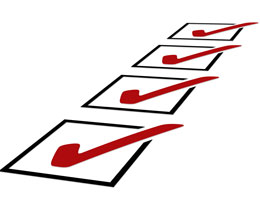
The Four Criteria
The cost/benefit analysis of the third-wave psychotherapies will include four criteria: whether or not the treatment is effective, is harmful, is affordable, and satisfies the clients. The effectiveness of a treatment is determined by randomly-assigned, controlled empirical observations. However, the effectiveness of therapies that experiments may present will not be trusted on face-value because researchers are subject to biases, mistakes, making spurious correlations, and having insufficient funds to get a good sample and big sample size – all of which can easily misconstrue the effectiveness of a treatment. The harmfulness of a treatment is most easily characterized by the negative side-effects of it. For example, anti-depressants may reduce depression for some people because they are not overtly effective, but anti-depressants also have the possible negative side-effect of suicide. The third criterion is the affordability of a treatment. It is important to note how much of the depressed population can afford these treatments and whether or not paying for a seemingly expensive psychotherapy makes the patients’ lives tougher. As an illustration, if a person sought out a treatment for a depression, caused by poverty from the loss of a job, and that person went greatly into debt to receive this treatment, it is likely that the insurmountable debt created could cause more stress, thus worsening the depression. Lastly, the fourth criterion of client satisfaction is necessary to consider because it acts as an exterior measure of all of the aforementioned criteria. In other words, a client is more likely to be satisfied with a treatment if that treatment was effective, not harmful, and affordable.
Depression
Before delving into the four psychotherapies, it is necessary to have a brief overview on depression. Depression “is the fourth leading contributor to the global disease burden” and about 121 million people have it today. Because depression is so prevalent the DSM has clear guidelines on diagnosing a patient as depressed. The DSM suggests that if one’s functioning changes for at least two weeks, while one possesses at least five of the nine symptoms of depression, one can be said to be depressed. One of the symptoms must be either a depressed mood or a loss of interest while the other symptoms affect sleep, eating habits, psychomotor functioning, energy, decisiveness, self-esteem, and suicidal ideation. A variety of models can be used to understand depression; nonetheless, the focus of third-wave behavioral therapies is on the cognitive-behavioral model. Thus, when comparing the treatments, the mental and behavioral components of depression will be most relevant. The cognitive symptoms of depression include: difficulty concentrating, indecision, memory problems, confusion, dullness, low self-esteem, and thoughts of worthlessness, guilt, shame, and suicide (Lewis 2012). Consequently, the third-wave behavioral therapies concentrate on fixing these symptoms and having depressed patients return to their previous level of functioning.
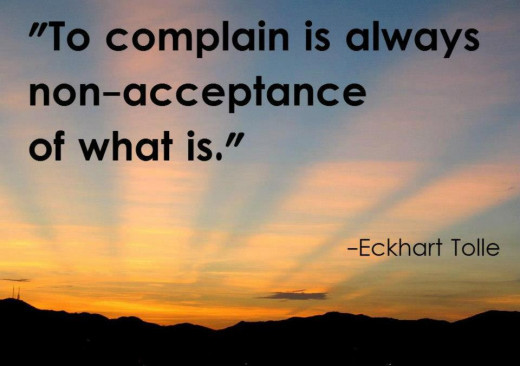
ACT
Firstly, a look will be taken into how the acceptance and commitment therapy (ACT) goes about curing the symptoms of depression. ACT starts with the assumption that distress is a normal part of human life and that one should simply accept the distress instead of try to avoid it. Thus, ACT tries to stop clients’ tendencies to engage in experiential avoidance, or “attempting to avoid unpleasant thoughts, emotions, memories, and other private experiences.” Experiential avoidance is viewed negatively because it often leads to an increase in the distress and it prevents humans from normal functioning. To stop this avoidance of life experiences, ACT clients are pushed to accept the distress and live a meaningful life through the accomplishment of valued goals. Also to stop avoidance, cognitive defusion is used, which teaches that words are subjective symbols of reality and so they should be met with skepticism. Cognitive defusion is integral to ACT and helps clients see words more philosophically and reduces the chance that clients may buy into their negative thoughts. For example, if one who learned the technique of cognitive defusion keeps thinking, “I am a terrible person,” that person can reduce the negative-sounding implication of his or her words by asking, “what is the true meaning of terrible” and “can I really trust such an abstract word to describe my entire being”? Thus, the client is not avoiding his or her words but instead is trying to find the truth in them and accepting them. Hence, ACT involves the acceptance of reality and distress and the commitment to ones values (Flaxman 2010).
A study done by Forman compared the effect sizes of ACT and cognitive therapy (CT) for the treatment of depression. Participants for the study were taken from a university counseling center. The exclusion criteria were sparse; thus, the 101 participants included was a diverse sample. 23 therapists treated the clients and all had received training in both ACT and CT, which allowed for all the therapists to treat both the ACT and CT groups and not ruin the results with their differences. The BDI-II, or Beck Depression Inventory, was used in this study in order to measure the severity of depression that the clients’ possessed. The average decrease in the pretest BDI score to the posttest BDI score, after ACT was applied, was from 18.96 to 10.05, an effect size of 0.66. The average amount of sessions clients went to was 15.60 for ACT, but the attrition rate was about 1/3rd of the total participants. The sessions attended were about the average needed for ACT; however, the attrition rate was way too high and is a significant problem to the results. Still, the results show that ACT had a significant effect in treating depression (Forman 2007).
A meta-analysis of ACT, done by Powers, reveals the effectiveness of ACT too. This study included an analysis of 18 randomized trials, which had a total of 917 participants. The search engines used to find these studies were PsycInfo, MEDLINE, SCOPUS, and the Cochrane Central Register of Controlled Trials. The studies included needed to have a control group, data that would allow for the measurement of effect sizes, and human participants. The average effect size of 0.76 shows that a relatively high effect level favors ACT for the treatment of depression over the control groups in the studies analyzed. There was no significant relationship between study quality and the effect sizes; so, this data is rather trustworthy. However, not many studies were included that measured the effectiveness of ACT for depression. Only six of the studies included in the meta-analysis focused on the effectiveness of depression; therefore, more research needs to be done with regards to ACT for the treatment of depression (Powers 2009).
Speaking of needing more research being needed, the harm caused from ACT cannot be truly assessed because of the lack of research on it, the average price of ACT has not yet been researched, and the client satisfaction of ACT for the treatment of depression has also not been studied. Although no research has been offered, it is assumable that ACT cannot be very harmful because it does not necessitate the inclusion of medications, which often have some negative and harmful side-effects. Also, ACT focuses on changing the way a client thinks and on discovering and having the client commit to his or her values. Theoretically, the goals of ACT sound as if they only have healthy consequences for the clients; still, studies addressing the harmfulness of ACT need to be made. Likewise, studies on the average price for ACT need to be undertaken. With the research information provided on ACT, one can only assume that it is just an average-costing third-wave behavioral therapy. Lastly, the client satisfaction of ACT needs to be studied too. ACT needs to be studied much more in order to have a trustworthy cost/benefit analysis of it.
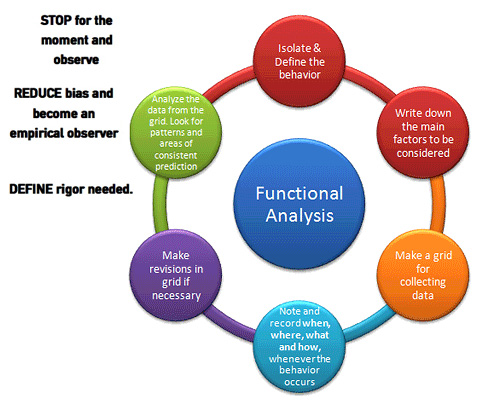
FAP
Secondly, the functional analytic psychotherapy (FAP) will be analyzed for costs and benefits. The theoretical ideas of FAP will initially be summarized. FAP focuses on the client-therapist relationship and how such a relationship can relate to the social environment enough to be able to change the clients’ problematic behavior. Clinically relevant behavior (CRB) are the problem behaviors of the client that occur within the session. CRB is important because reinforcement for or against the behavior can be offered more instantaneously, increasing the chance that the behavior will change. In FAP, it is necessary to have reinforcement be genuine, which occurs best when CRB pops up naturally in the evocative social environment between client and therapist. The goal of FAP is that the relationship that the client has with the therapist resolves problems and that these resolutions are generalized to all social life of the client (Kohlenberg 1994).
FAP has revealed that such resolutions work in the treatment of depression. For example, a study done by Kohlenberg used FAP-enhanced cognitive therapy (FECT) to show, of course, that FAP enhances normal cognitive therapy. Clients for the study were selected if they had an 18 or higher on the BDI. During the first six months of the study 18 clients were assigned to four therapists who used cognitive therapy (CT) for their depression. After the sixth month FECT began and 28 subjects were assigned to the four therapists. The therapists were already trained in CT and had practiced it for at least ten years, while none of them had ever practiced FECT and were recently given books and a six hour training session in FECT. Averaging the BDI and HRSD, Hamilton Rating Scale for Depression, 79% of the FECT clients responded to treatment as compared to 60% of the CT clients. This translated to a mean effect size of 0.40 across all measures of depression. Some problems with the experiment are that it was an uncontrolled trial and had a relatively small amount of subjects, 46 to be exact. Still, the results are amazing since the therapists were so skilled in CT but had never practiced FECT; yet, the therapists did better when they practiced FECT, revealing the help FAP adds to treating depression. FECT clients also appear to be more satisfied as shown by their identification of significantly more improvement, a significantly better therapist, and significantly better relationship improvement than the CT clients identified. (Kohlenberg 2002).
FAP creates no or extremely little harm, has an unknown price, and has a good level of client satisfaction. Because FAP mainly is just a relationship between client and therapist and no harmful or dangerous procedures are used, just mostly social reinforcement, FAP cannot be a dangerous therapy for the clients. No drugs are used and, as of now, no harmful side effects have been shown to come from the therapy. Since there is no research on the harmfulness of the therapy and the therapy cannot be logically perceived as harmful, it is safe to assume that FAP is non-harmful. Likewise, research on the average price of FAP is either sparse or non-existent. So, one should assume it has a relatively average price of CBT therapies because it does not use any overtly expensive equipment or drugs. However, the study examined has shown a good amount of client satisfaction for FECT as compared to client satisfaction for CT. Clients prefer FECT because they believe it makes their improvements, therapists, and improvements in relationships seem better. FAP can be assumed to increase majorly depressed client’s satisfaction then (Kohlenberg 2002). To conclude, the analysis of FAP has shown that it is an effective and well-like treatment for depression.
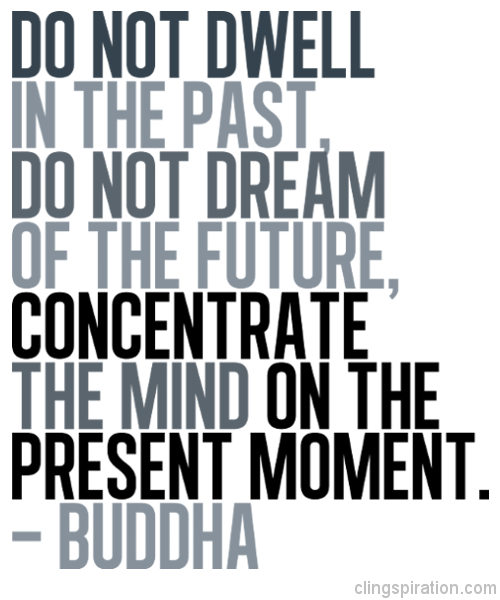
MBCT
Thirdly, the theory of Mindfulness-Based Cognitive Therapy (MBCT) will be discussed and analyzed. MBCT was conceived to prevent the relapse back into depression; in other words, it is useful to apply to post-treatment situations for depression. MBCT consists of eight sessions that are about two hours long and include meditation, mindfulness, attention to breathing patterns, awareness of emotions and thoughts, and an overall Buddhist-like approach to life. Mindfulness, the purposefulness and non-judgmental awareness that occurs from focusing on the present moment, is vital to MBCT. Similar to ACT, MBCT does not seek to change thoughts or emotions, but simply seeks to have clients view their thoughts merely as mental events, not as truth. MBCT helps avoid rumination and anxiety, which are main causes of depression, by focusing clients on the present moment and making them aware of whatever is occurring in the now, instead of what has occurred or what may occur (Sipe 2012).
A study done by Teasdale reveals the effectiveness of MBCT for reducing relapses into depression. This study included 145 recovered recurrently depressed patients who were either randomized to receive MBCT or not to receive it. The patients were treated for eight weeks, as recommended for MBCT, and were then examined a year after the treatment in order to assess relapse. Participants were acquired and treated at three different sites by three different instructors. Four people declined to receive MBCT, six patients never went to any MBCT sessions, and seven went to less than four sessions; so, patients are particularly motivated to attend MBCT and not have a relapse into their depression. 77% of the patients had a history of at least three major depressive episodes, meaning that this population of clients was relatively difficult to cure entirely for depression. MBCT halved the recurrence of depression in the one year follow-up period for this 77% of subjects as compared to those who did not receive any MBCT (Teasdale 2000).
Another study of MBCT done by Kenny and Williams revealed its effectiveness. The sample was 49 patients who were treated for eight weeks. Inclusion criteria required patients to have three or more depressive episodes and to currently be majorly depressed, meaning that the participants included were deeply depressed. Before MBCT the mean BDI score was 24.3, while after MBCT the mean was 13.9, which is a highly significant change. Before treatment a score of 30 or greater for the BDI was held by 14 patients, while after MBCT was administered only 4 patients held a score of 30 or greater. In other words, the effect size of MBCT for treating depression was a large 1.04. After the study, patients were asked how important the program had been to them. The max rating was 10, so the mean rating of the patients, which was 8.5, is rather high (Kenny and Williams 2007). Therefore, it is safe to assume that MBCT is a great treatment for depression and remarkable at preventing relapse.
MBCT seems to not cause harm, have little cost, and have great client satisfaction. No research has shown MBCT to be harmful and it is very unlikely that MBCT could cause harm. This is because MBCT makes people more aware of the present moment, hopefully causing them to be more alert and avoid the dangers of the present instead of increasing stress by ruminating on the mistakes of the past. MBCT does not require the usage of drugs; so, harmful side-effects are avoided. Since MBCT is a treatment that is mental, internal, and spiritual, harm caused by MBCT is unlikely. The cost of MBCT is also small because it only requires 16 hours total for treatment. Such a miniscule amount of time cannot possibly cost too much for patients, especially because MBCT occurs in a group session (Sipe 2012). Since an entire group is being treated at once, it is likely that the cost of MBCT is spread amongst them and therefore is hopefully, to some extent, reduced. Lastly, MBCT has a relatively high amount of client satisfaction. According to the study done by Kenny and Williams, on average clients rated the importance of MBCT as an 8.5 out of 10. Although, only 46 of the 49 patients rated it and it was a rather small sample, it is still remarkable how high the ratings were (Kenny and Williams 2007). Thus, MBCT is an effective, most likely cheap, and efficient therapy that clients tend to support.
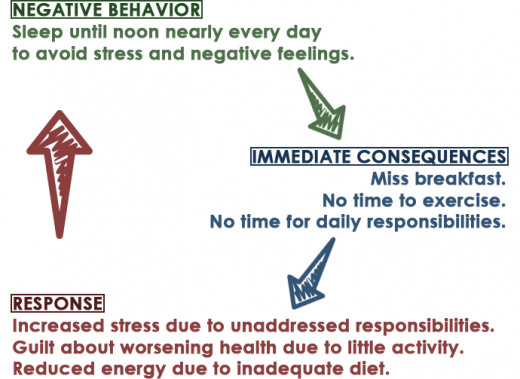
BA
Lastly, Behavioral Activation Therapy’s (BA) theoretical ideas and construction will be assessed. BA takes a FAP perspective of depression, so reinforcements are used to help reduce problematic behaviors. According to BA, five main environmental reinforcers help to maintain and perpetuate depression. These environmental reinforcers are pointed out as understandable by therapists but need to be reduced in order to make progress. The first of which is the reinforcement of avoidant behavior; when life becomes too difficult for people they withdrawal from their usual habits and from interactions, which could actually help to reduce their depression. The second environmental reinforcer is of depressed behavior. People often inadvertently positively reinforce depression by giving sympathy to the depressed and being more lenient on them; therefore, increasing the depressed person’s comfortability with his or her depression. The third environmental reinforcer is a reduced reinforcement of non-depressed behavior. Since depressed people exhibit symptoms of less mental capacity and ability to focus, they lose the benefits associated with completing difficult tasks because they lose the ability to accomplish those difficult tasks; therefore, reducing reinforcement from non-depressed behaviors, such as accomplishing tasks, which worsens the depression. The fourth and fifth environmental reinforcers of depression are a perceived punishing or aversive environment and a perceived cost to responding – both of which increase avoidance, which increases depression. BA seeks to manipulate or change these reinforcers in order to reduce the problematic behaviors that come from them (Curran 2011).
A study on the effectiveness of BA was taken up by Gawrysiak and his colleagues and applied to 30 university students. A power analysis was done in order to determine the sample size needed and 26 was the resultant number; consequently, the 30 participants included should be more than enough. These participants are all introductory psychology students from a public southeastern university. Participants were randomly assigned to the experimental group, to which BA for depression was applied, or they were assigned to the no-treatment control group. The results “indicated that on the BDI–II, 13 of 14 (93%) individuals in the BATD (Behavioral Activation Treatment for Depression) group significantly improved, compared with only 5 of 16 (31%) in the control group.” These results are wonderful considering that only a 90-minute session of BA was offered for the experimental group, along with homework. Usually 9 sessions are offered for BA; but, the good side of having only one session is that there was no attrition (Gawrysiak 2009).
A few meta-analyses of the effectiveness of BA for treating depression have also been conducted, one of which was done by Mazzucchelli. In his analysis, 34 different studies were included if they met the inclusion criteria of having a control group and a large enough sample size. To find the studies, the researchers used the online databases of PsycINFO and MEDLINE. The effect size of BA for depression, against the control conditions, of all the studies combined was a significant 0.78, while the effect size of BA for major depressive disorder was also a significant 0.74. The meta-analysis also revealed that BA has been shown to be effective in treating the elderly, the young, those with dementia, those with disabilities, and those who are severely depressed; therefore, it can be assumed that BA can be applied to a “broad range of populations” (Mazzucchelli 2009).
The harm caused by BA is either non-existent or has not yet been discovered, the average price of BA is unknown, and the client satisfaction of BA for depression is high compared to the client satisfaction of their usage of medication to treat depression. BA is similar to FAP in respect to consisting only of a client-therapist relationship in which reinforcements are altered. So, as with FAP, it is unlikely that BA causes patients any harm because it does not require the usage of medications in conjunction with it. The price of BA, as with all the other therapies, is unknown, but it can be assumed BA does not cost too much because it does not need the implementation of expensive tools into the therapy sessions. BA has a higher amount of client satisfaction for the treatment of depression as compared to satisfaction for antidepressants. More specifically, in a study, 51 participants rated BATD as better than antidepressants, compared to the 19 participants who rated antidepressants as better (Kwan 2010). Overall, BA is an effective treatment for depression that is, at least, more preferred by clients than simple antidepressants are.
Comparison of the Therapies
In conclusion, ACT, FAP, MBCT, and BA all have been cost/benefit analyzed mainly for their effectiveness, the harm they create, the cost of the therapies, and the satisfaction clients have of the therapies. ACT has been shown to have an above-medium effect size of 0.66, which was a reduction of about 9 points in the BDI scale (Forman 2007). Still, in the study the attrition rate was 33%, meaning that clients have a tough time sticking with the therapy. Also, the meta-analysis that was looked at for ACT had a much higher effect size of 0.76. Therefore, the effect size of ACT can be said to be around above-medium to high. Additionally, ACT was assessed for harm, price, and client satisfaction – none of which has been researched much, if at all, causing the assessment of them to have no meat. The only consideration that could be taken into account is that the high attrition rate may reflect a low amount of client-satisfaction.
FAP, on the other hand, has been shown to have a below-medium effect size when combined with CT; particularly the effect size was 0.40. This effect size is comparatively small to the effect sizes found for ACT’s treatment of depression; however, it should be noted that the therapists who used FECT for the study had never before used it. The study that found this effect size was also uncontrolled and had a small amount of participants; consequently, it cannot be taken as truth (Kohlenberg 2002). Empirical controlled studies on the effect FAP has by itself for the treatment of depression is either very small or does not yet exist; therefore, more research needs to be done in order to have a reliable amount of data on FAP. Extending this thought, more research is needed to see whether FAP is harmful and to know the average price of FAP. It is assumable that FAP should not be harmful at all and that the price of it is not too radical though. Lastly, compared to CT, FAP enhancing CT seems to be more satisfying to clients. In the study examined FECT was rated as significantly better than CT by itself, showing that FAP might be a good addition to CT (Kohlenberg 2002). With the little data that was analyzed, ACT seems to be better than FAP. This is mainly because ACT had a much larger effect size in both the studies looked at; however, FAP had a much lower attrition rate and was never before practiced by the clinicians used in the study. Still, ACT seems to come out victorious.
Now, MBCT will be examined and compared to ACT in order to know which treatment is better for depression. In one study that was examined on MBCT, the treatment had been found to halve the recurrence of depression for the sample of people who have relapsed at least two times back into depression in the past. This study had a large sample size, occurred in three different places – two of which were different countries, and followed the guidelines of MBCT’s usual length; thus, the study was remarkably good. Additionally, this study had very low attrition (Teasdale 2000). Another study assessed the effectiveness of MBCT for treating depression; this study found a remarkable pre-post effect size of 1.04. Only majorly depressed subjects were used, so this high effect size is great, considering it was a tough sample (Kenny and Williams 2007). The harm caused by MBCT, as well as the price of MBCT, have not yet been studied; but, considering the small amount of training needed for MBCT and the seemingly safe nature of its practice it is dubious that MBCT is harmful or over-priced. MBCT has been shown to satisfy clients though. In the study done by Kenny and Williams clients, on average, rated the importance of MBCT to them as an 8.5 out of 10. Consequently, because MBCT has a better effect size, a lower attrition rate, and been shown to satisfy clients and reduce relapse well, it is very likely better for treating depression than ACT.
Finally, MBCT and BA will be assessed to see which one is the best of the four third-wave behavioral therapies for treating depression. Firstly, a summary of the cost/benefit analysis of BA will be provided. A good effect size of 0.70 was found for BATD in a study which measured the effect of only one 90-minute session. The sample size may have been small, but it is still amazing that such a large effect came from merely one session (Gawrysiak 2009). Another study of BATD, which was a meta-analysis, found that BATD has a significant effect size of 0.78. This meta-analysis also revealed that BA has been shown to be able to be applied to various types of populations (Mazzucchelli 2009). Again, a lack of research does not make it possible to render good judgments on whether or not BA is harmful or pricey. On the other hand, research does exist which reveals that BA is relatively a satisfying treatment compared to antidepressants; thus, BA cannot at least be too bad to clients (Kwan 2010). Between BA and MBCT, MBCT seems to be the better treatment for depression. BA just has not been proven to reduce relapse of depression significantly and it has a lower effect size than MBCT. From what was analyzed, BA seems to have nothing over MBCT except for that it has been shown to be applicable to various groups of people.
Directions for Future Research
Still, a conclusion is unmerited due to the lack of research on third-wave behavioral therapies; therefore, it is recommended that further research be conducted before a reliable cost/benefit analysis can be rendered. In particular, a research project comparing the effectiveness and client satisfaction of ACT, FAP, MBCT, and BA would make a cost/benefit analysis of these therapies easier. This is because the methods taken in the several studies of these therapies are too diverse to get much comparative meaning from. For example, the study done on the effectiveness of FECT included therapists who have never practiced or even gotten their degree in FECT (Kohlenberg 2002). This is a problem because all the other studies that were examined had therapists that were well-versed in the therapies they conducted. Also, comparing the client satisfaction of therapies is difficult because researcher measure client satisfaction in various ways. As an illustration, in the MBCT study (Kenny and Williams 2007) client satisfaction was measured on a scale from 1 – 10, while in the FAP study (Kohlenberg 2002) and the BA study (Kwan 2010) the client satisfaction was only compared to the other treatments in the study and no numerical meanings were assigned. Thus, to solve this problem, a general quantitative measurement device of client satisfaction should be created and followed by researchers. Another problem with comparing the effectiveness of the third-wave behavioral therapies is the lack of research on the therapies themselves. FAP seems to have no or almost no research on its effectiveness at treating depression by itself; instead a study on FECT had to be used to determine the effectiveness of FAP. Therefore, to solve these problems altogether, a comprehensive comparative study on the effectiveness and client satisfaction of these therapies should be done.
Future research should also focus on the discovering the harm that the third-wave therapies may cause. These therapies have not been around too long, making the harm they may cause yet to be known. The complete absence of research on the harm of the therapies analyzed was a great hindrance to the cost/benefit analysis. Thus, future research should at least attempt to discover the possible harm caused by treatments instead of completely ignore this topic. An article addresses this problem with detailed instructions on the methodology of detecting harm. This article suggests, that to detect harm, researchers should “(a) develop systems for monitoring untoward events, (b) report descriptive case studies and qualitative research, (c) make use of randomized controlled trials, (d) examine a broad range of outcomes over time, (e) examine the active ingredients of treatments that cause harm, (f) examine the mechanisms by which harm is produced, (g) examine whether harm is universal or moderated, and (h) promote discussion about standards and replication.” As one can tell, this article pushes forward the idea that the usual research to determine whether or not a treatment is beneficial can also be used to determine the harm caused by treatments (Dimidjian 2010). Consequently, methods for discovering the harm caused by treatments are not entirely unknown and should therefore be utilized in order to allow clients to weigh in all the possible costs of treatments.
Likewise, research needs to be conducted in order to find the average price of therapies so that an almost comprehensive cost/benefit analysis of the third-wave behavioral therapies can be conducted by the depressed who are seeking treatment. Unlike all the other areas of the cost/benefit analysis, articles and researches that try to assess or even mention the prices of therapies seem to be non-existent. This is disappointing because if clients do not know the prices of all the therapies available to them, then they cannot knowledgably determine which therapy to choose. Clients who may choose a more expensive therapy because they do not know cheaper ones exist, which are just as effective, allow for the more expensive ones to persist. The problem of allowing for over-priced therapies to continue is that it harms competition and the natural selection of therapies. This natural selection weeds out the worse therapies and keeps the better and cheaper therapies thriving; thus, encouraging therapists to create more cost-efficient therapies, which allows for therapies to evolve more speedily. Consequently, research on the average prices of therapies should be conducted because it is very beneficial to clients and the progress of psychotherapies. To conclude, much more research is needed on the third-wave behavioral therapies before one can reliably determine which therapy is the best for treating depression.
References
Curran, Joe; Ekers, David; Houghton, Simon. (2011). Behavioural activation in the treatment of depression. Mental Health Practice, 18.
Dimidjian, S., & Hollon, S. D. (2010). How would we know if psychotherapy were harmful? American Psychologist, 65 (1), 21-33.
Flaxman, Paul E; Blackledge, J. T.; Bond, Frank W. (2010). Acceptance and Commitment Therapy: Distinctive Features. New York, NY: Routledge.
Forman, E. M.; Herbert, J. D.; Moitra, E.; Yeomans, P. D.; Geller, P. A. (2007). A Randomized Controlled Effectiveness Trial of Acceptance and Commitment Therapy and
Cognitive Therapy for Anxiety and Depression. Behavior Modification, 31 (6), 772-799.
Gawrysiak, M., Nicholas; C., & Hopko, D. R. (2009). Behavioral activation for moderately depressed university students: Randomized controlled trial. Journal of Counseling Psychology, 56 (3), 468-475.
Kenny, M.; Williams, J. (2007). Treatment-resistant depressed patients show a good response to Mindfulness-based Cognitive Therapy. Behavior Research, 45 (3), 617-625.
Kohlenberg, Robert; Tsai, Mavis. (1994). Improving cognitive therapy for depression with functional analytic psychotherapy: Theory and case study. Behavior Analysis 1994 Fall; 17 (2), 305–319.
Kohlenberg, Robert; Kanter, Jonathon; Bolling, Madelon; Parker, Chauncey. (2002). Enhancing cognitive therapy for depression with functional analytic psychotherapy: Treatment guidelines and empirical findings. Cognitive and Behavioral Practice, 9 (3), 213-229.
Kwan, Bethany; Dimidijian, Sona; Rizvi, Shireen. (2010). Treatment preference, engagement, and clinical improvement in pharmacotherapy versus psychotherapy for depression. Behaviour Research and Therapy, 48 (8), 799-804.
Lewis, Bradley (2012). Depression: Integrating Science, Culture, and Humanities. New York, NY: Routledge.
Mazzucchelli, Trevor; Kane, Robert; Rees, Clare. (2009). Behavioral Activation Treatments for Depression in Adults: A Meta-analysis and Review. Clinical Psychology: Science and Practice, 16 (4), 383-411.
Öst, Lars-Göran. (2008). Efficacy of the third wave of behavioral therapies: A systematic review and meta-analysis. Behaviour Research and Therapy, 46 (3), 296–321.
Powers, Mark. (2009). Acceptance and Commitment Therapy: A Meta-Analytic Review. Psychotherapy and Psychosomatics, 78, 73-80.
Sipe, W. B., & Eisendrath, S. J. (2012). Mindfulness-Based Cognitive Therapy: Theory and Practice. Canadian Journal of Psychiatry, 57 (2), 63-69.
Teasdale, J.; Segal Z.; Williams J.; Ridgeway V.; Soulsby J.; Lau M. (2000). Prevention of relapse/recurrence in major depression by mindfulness-based cognitive therapy. Journal of Consulting and Clinical Psychology, 68 (4), 615-623.








